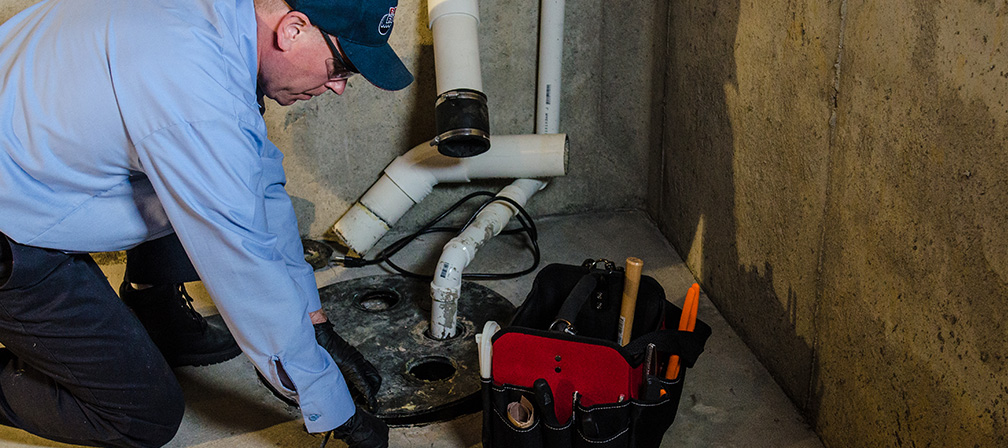Tested Methods for Cleaning a Sump Pump
Tested Methods for Cleaning a Sump Pump
Blog Article
The content down below involving How to Care for Your Sump Pump is fairly fascinating. Don't skip it.

Sump pumps are essential components in many homes, particularly in locations susceptible to flooding or extreme wetness. They help prevent water damages by successfully eliminating excess water from basements or crawl spaces. However, like any other device, sump pumps call for normal upkeep to ensure they function efficiently when required one of the most. Cleaning your sump pump is a vital part of its maintenance, and understanding exactly how to do it correctly can conserve you from expensive repair services and prospective disasters.
Introduction
Keeping a clean sump pump is vital for its proper functioning and longevity. Ignoring this vital job can result in clogs, malfunctions, and eventually, water damages to your residential or commercial property. Therefore, discovering how to cleanse a sump pump is critical for home owners that count on these tools to maintain their cellars dry and protected.
Signs of a Dirty Sump Pump
Understanding when your sump pump needs cleaning is vital for protecting against prospective malfunctions. Some usual signs that show an unclean sump pump include odd sounds throughout procedure, decreased water flow, and visible debris in the pit. If you observe any of these symptoms, it's vital to cleanse your sump pump without delay to stay clear of any additional problems.
Preparing for Cleaning
Prior to you start cleansing your sump pump, it's essential to take some safety preventative measures. Begin by turning off the power to the pump to avoid any kind of electrical crashes. In addition, put on suitable safety equipment, such as gloves and goggles, to protect yourself from dirt, particles, and potential pathogens.
Understanding the Sump Pump
Prior to diving right into the cleansing procedure, it's vital to have a fundamental understanding of just how a sump pump works. Normally installed in a pit or container listed below the cellar floor, a sump pump includes several vital parts, including a pump, a float switch, and a discharge pipeline. When water builds up in the pit, the float button turns on the pump, which then pumps the water out via the discharge pipeline, far from the building's structure.
Detailed Overview to Cleaning a Sump Pump
Turning off the Power
Begin by disconnecting the power supply to the sump pump to prevent any type of mishaps while cleansing.
Checking for Correct Functioning
Prior to reinstalling the pump, execute a quick test to ensure that the float button triggers the pump appropriately. Pour some water into the sump pit and observe the pump's procedure. If whatever is operating appropriately, you can reassemble the pump and reconnect the power supply.
Removing Debris and Dirt
Use a bucket or a scoop to get rid of any visible debris, dust, or sediment from the sump pit. Dispose of the particles appropriately to stop it from blocking the pump or the discharge pipeline.
Cleansing the Pump and Float Change
Once the pit is clear of debris, very carefully get rid of the pump from the pit. Examine the pump and the float button for any type of indications of damage or wear. Make use of a soft brush or towel to cleanse the surfaces and remove any kind of built up gunk.
Flushing the System
After cleaning the pump and float button, flush the sump pit with clean water to eliminate any type of continuing to be dirt or debris. This will aid guarantee that the pump operates smoothly and effectively.
Maintenance Tips to Maintain Your Sump Pump Clean
Along with periodic cleansing, there are several upkeep ideas you can comply with to maintain your sump pump in optimum problem:
Verdict
Cleaning your sump pump is an important element of its upkeep and guarantees that it runs successfully when you need it one of the most. By adhering to the steps described in this overview and integrating regular upkeep into your regimen, you can prolong the lifespan of your sump pump and protect your home from water damage.
6 STEPS ON HOW TO CLEAN A SUMP PUMP PROPERLY
UNDERSTANDING SUMP PUMPS
Your sump pump plays a crucial role in protecting your home by managing and removing excess water. It primarily functions as a “shield”, guarding your basement against the damaging effects of water accumulation. The pump is housed in a sump pit in the lowest part of your basement, and its job is to pump out any water that collects there.
During heavy rainfalls or when snow melts rapidly, water can infiltrate your basement, posing potential risks like flooding, structural damage, and harmful mold growth. Here, the sump pump springs into action, pumping out the intruding water and directing it away from your home.
SAFETY FIRST
Before cleaning, remember to prioritize safety. Disconnect the sump pump from the power source to prevent any accidental electric shocks. Also, wear sturdy gloves to protect your hands from any sharp or dirty components within the pump.
REMOVE THE SUMP PUMP
After ensuring your safety, the next step is to remove the sump pump from its pit. Doing this might require careful maneuvering as you don’t want to damage any pump components. Once removed, clean the sump pit to remove any accumulated debris or sludge.
INSPECT THE PUMP
Inspect the pump for any visible signs of wear or damage. Check the power cord, float switch, and impeller housing. If any components look worn out or damaged, consider replacing them to ensure optimal performance.
CLEAN THE PUMP
Thoroughly clean the pump with warm, soapy water. Make sure to rid it of any dirt, gravel, or other debris that might impede its performance. You can use a toothbrush to clean the small, hard-to-reach parts of the pump.
REINSTALL THE SUMP PUMP
Reinstall the pump into the sump pit Make sure it’s positioned correctly to remove the water effectively Once it’s back in place, reconnect it to the power source TEST THE PUMP
Finally, pour some water into the pit to ensure the pump works correctly. It should start automatically and begin pumping out the water; if it doesn’t, check the power source and the positioning of the pump.
Remember, while cleaning your sump pump is an essential part of home maintenance, hiring a professional plumber for a thorough inspection and cleaning at least once a year is also important. This will ensure that your pump is in optimal condition, ready to protect your home from potential water damage.
BEST PRACTICES FOR CLEANING SUMP PUMP DISCHARGE PIPES
Regular Inspection: Regularly inspect your discharge pipes, especially during heavy rainfall or snowmelt periods. Look for any signs of blockage or damage. Early detection of problems can prevent serious issues down the line. Periodic Cleaning: Over time, sediment and debris can accumulate in the discharge pipes, impeding the flow of water. Regular cleaning helps keep the pipes clear and functioning efficiently. You can use a high-pressure water jet to effectively clean the pipes. Insulation During Winter: In colder climates, discharge pipes can freeze, blocking the outflow of water. Protect your discharge pipes from freezing temperatures by insulating them with foam pipe insulation. This will ensure the sump pump can continue to discharge water even in freezing conditions. Proper Positioning: The discharge pipe should be positioned to direct water away from your home’s foundation. Improper positioning can lead to water seeping back into the basement. Ensure the pipe is long enough and angled correctly. Installation of a Check Valve: A check valve prevents water from flowing back into your sump pit after the pump has pushed it out. Installing a check valve helps maintain the efficiency of your sump pump and reduces the risk of flooding. Minimize Pipe Turns: Every curve or turn in the discharge pipe can decrease the efficiency of water flow. By minimizing turns and bends in your discharge pipe, you can increase the efficiency of your sump pump. https://www.fullspeedplumbing.com/how-to-clean-a-sump-pump-properly9999/

Do you enjoy reading up on How to Care for Your Sump Pump? Place a remark directly below. We would be pleased to hear your thinking about this piece. In hopes that you visit us again later on. Loved our article? Please quickly share it. Help somebody else discover it. We thank you for reading our article about Steps to Cleaning Your Sump Pump Properly.
Check This Out Report this page